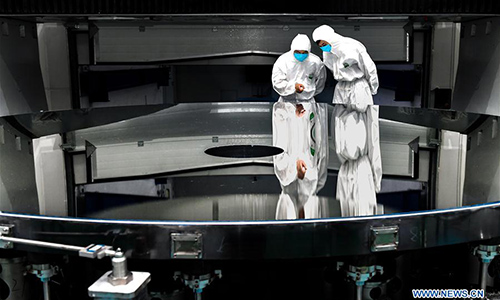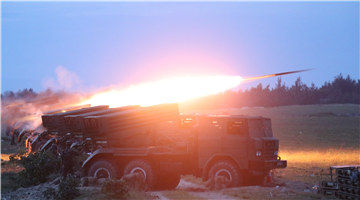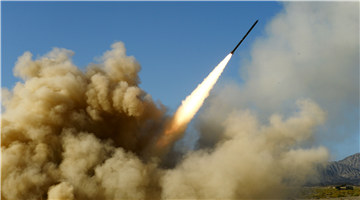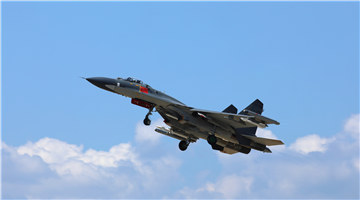
Chinese scientists produced the world's largest aspheric mirror using a new material, which could be used in military and national defense applications, a military expert said.
The 4.03-meter diameter mirror is made of silicon carbide (SiC) and passed its final acceptance test on Tuesday, according to a report sent by Changchun Institute of Optics, Fine Mechanics and Physics, the mirror's manufacturer, to the Global Times Wednesday.
The successful development of the mirror breaks the monopoly of the production of large diameter aspheric mirror by foreign countries and puts China among the world's most advanced countries in the field.
China has independent intellectual property rights over the technology and key facility used in the production.
The wide-diameter aspheric mirror is a key component of systems used for Earth observations from space, deep space exploration and astronomical observation, the report said.
The mirror's quality and precision is significant to the country's national defense security, national economic construction and basic scientific research, the report said.
The report added that the mirror will be used in the country's large ground-based facility.
Song Zhongping, a military expert and TV commentator, told the Global Times on Wednesday that such a photoelectric facility can be used to observe low earth orbit satellites of other countries and to support measurement work in rocket and missile launches.
"The use of the SiC material is a breakthrough," Song said. "The material is resilient under different environments."
"However, the production process is extremely difficult and complicated, which is the key problem in using SiC," Song noted.
Due to the complicated production process, it has long been accepted worldwide that the largest diameter of a SiC mirror is no larger than 1.5 meters.
The larger the diameter, the more capable the mirror is in observing, Song said.
The 1.5-meter diameter and 2-meter diameter SiC mirrors have been successfully used in the country's key equipment and facilities, the report said. It did not release further information on those programs.
The SiC can also be used in other important fields, Song said, such as space telescopes.
"The use of SiC could also support China's launch of space telescopes after 2025," Song said.
China's first Hard X-ray Modulation Telescope HXMT was launched in 2017.
An even more capable telescope called enhanced X-ray Timing and Polarimetry mission (eXTP), the consortium of which includes Chinese research institutes and international partners, is scheduled for launch in 2025.











